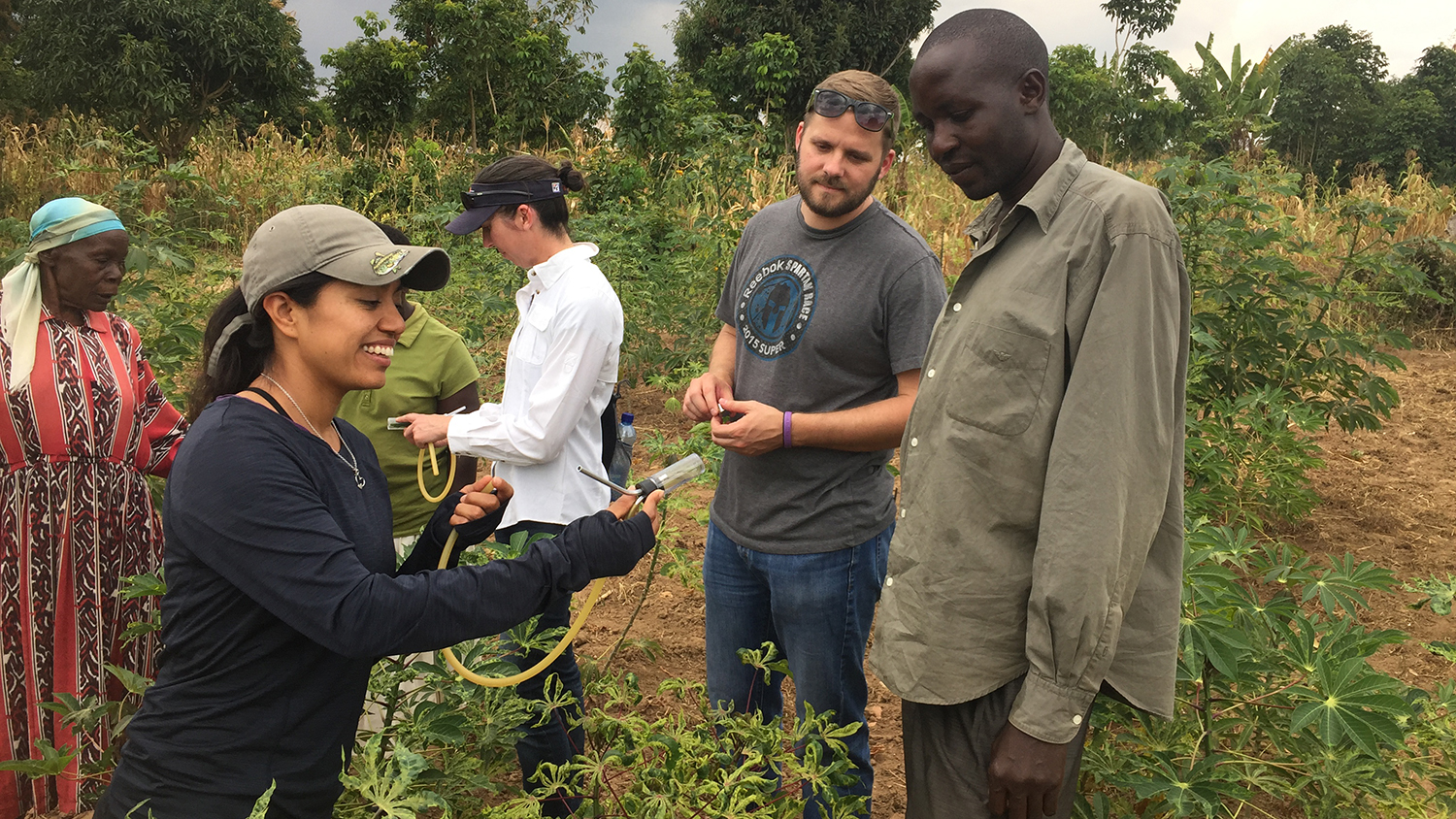Fieldwork in Africa Informs Science – and Changes a Scientist

Editor’s Note: This is a guest post by William Sharpee, a postdoctoral scientist in NC State’s Department of Entomology and Plant Pathology. In our ongoing Research Matters series, NC State researchers address the value of science, technology, engineering and mathematics.
As a scientist who studies plant diseases, working in a foreign country offers a treasure trove of pathogens that are not present in the United States. This is, of course, a double-edged sword: what is fascinating to a scientist can be devastating to a farmer who lacks the resources to control such diseases.
This is something I learned over the past year and a half while studying Cassava Mosaic Disease (CMD) and working with Gabriella Chavez, a postdoc at Auburn, and our technician Mary Wambugu at the BecA-ILRI Hub in Nairobi, Kenya.
Back in the late 1990s, a CMD pandemic devastated cassava crops across eastern Africa. The pandemic caused thousands to starve in the region, fueling interest in understanding how it occurred. It was later discovered that the pandemic was associated with recombination between two viruses – African Cassava Mosaic Virus (ACMV) and East African Cassava Mosaic Virus (EACMV). Moreover, the population of whiteflies (Bemesia tabaci) that feed on cassava and can transmit these viruses exploded during the pandemic and facilitated the spread of ACMV, EACMV, and the recombinant virus. It is still not known how these viruses recombined and how the whiteflies contributed to the pandemic.
To prevent another pandemic from occurring, knowledge about how these viruses evolve and recombine is essential. Our goal is to determine when and where viruses like ACMV and EACMV change to new and possibly more damaging viral species. By understanding when, where and how these viruses evolve, control methods can be developed that minimize or eliminate the possibility of another pandemic.
Much of our efforts in Nairobi have focused on setting up the infrastructure for our experiments. We established cassava plants in a greenhouse, set up a specialized room for containment of whiteflies, and outfitted a molecular lab. Using these resources, we are performing controlled experiments in which whiteflies acquire ACMV and EACMV from an infected plant and transfer the viruses to healthy plants, much like they would in a field setting. By performing next generation sequencing of the viruses at each step of the infection process, we can determine when they mutate and change.
The project has provided opportunities not available to most postdocs. We have interacted with cassava growers and met Sarah Obama, Barack Obama’s grandmother, who spoke about the devastating effects CMD can have on a community that is dependent on cassava for food and income. These experiences have put our research into a context of helping solve a persistent problem faced by African farmers and their families who depend on cassava.
Personally, it has been a life-changing experience. Seeing the struggles of Kenyan farmers firsthand has changed the way I approach science as well as how I view my own life. I have also gained a new level of confidence as a scientist through my experiences of living and working in a culture that is completely different from my own.
Beyond these experiences, the lessons learned and the results gained from our efforts will help ensure a food-secure future for eastern Kenya.
- Categories:


